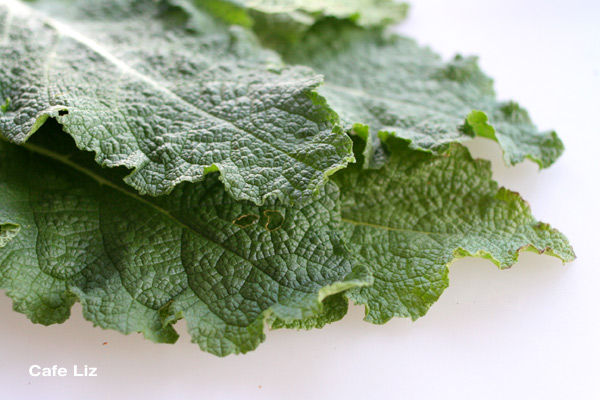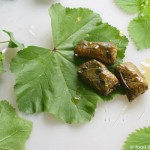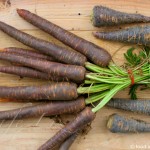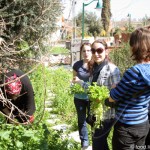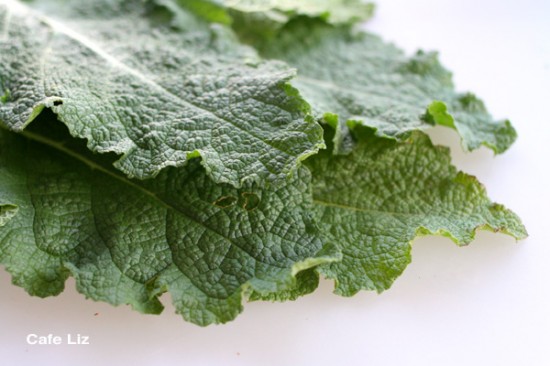
The winter rains bring with them an explosion of green growth, much of which filters its way into our markets — well, some of them, at least. For whatever reason — wealth? — many of the wild greens do not play a role in most people’s diets. And it’s a pity, because native plants are an excellent way to embrace the land, eating local at its best.
However, you can still find them. A few of them may be in your yard, or growing alongside parking lots, or next to roads. Well, any of them could be there — these are wild plants, after all. But you can save yourself the trouble (and potential danger) of identifying them yourself by buying them after someone else did the foraging — Arab and interracial locales, as well as less well-off places, are a good bet for this.
There’s a potential catch, though. Some plants that have been part of the culinary tradition for hundreds of years are now protected by law due to overpicking, but they’re still being sold in the markets. Most likely it’s a matter of ignorance. However, there’s a reason they’re protected — they’ve become endangered by the harvesting habits, which in many cases prevent them from reproducing.
Here’s a list of what’s what — the plants I’ve identified around my house (mallow, sorrel, nettle), the delights in various markets (wild beet, chicory, mustard, and Jerusalem sage) a few that were there but shouldn’t be (cyclamen, tumbleweed). Last but not least — some simple recipes that highlight the vibrant freshness of the season.
But before we begin, a warning: If you’re not 100 percent sure you know what you’re picking, don’t eat it. People have died over misidentifications. At the very least, this guide will give you the satisfaction of knowing what’s in your yard. Knowing how to identify the urban flora makes your environment a little bit more familiar — especially when you see your friend the mallow bush peeking out at every opportunity.
Now, let’s go.
What’s off-limits

 Fortunately, most kinds of wild plants you’ll find in markets aren’t protected, but there are a few that are. If a plant is protected, that means it cannot be picked in the wild for commercial use, but cultivating the species is not just legal, it’s encouraged.
Fortunately, most kinds of wild plants you’ll find in markets aren’t protected, but there are a few that are. If a plant is protected, that means it cannot be picked in the wild for commercial use, but cultivating the species is not just legal, it’s encouraged.
The catch is that not all the protected, edible plants are being grown commercially, and most of what you see in markets was probably picked from the wild, illegally.
Israel’s best-known protected plant is zaatar (wild hyssop, or ezov (×זוב מצוי) in Hebrew — but popularly known as zaatar / זעתר). At this point, zaatar is widely cultivated, but sometimes it’s also picked illegally. (Although the consensus seems to be that if you pinch a leaf or two off a wild plant, that’s still OK.)
Other protected plants with a long-standing place in the local food culture are cyclamen (rakefet / רקפת), more commonly known for its role as a flowering houseplant, and tumbleweed (akuvit hagalgal / עכובית הגלגל), a kind of prickly thistle. The leaves of the cyclamen are stuffed like grape leaves (the rhizomes are poisonous, however). Apparently, it plays a little-known role in Greek cuisine, too.
Tumbleweed, which appears in the bible, may have been the plant used to made Jesus’ crown of thorns. Young tumbleweed stalks are dug from the ground and stewed — which means the seeds never have a chance to develop.
In the photos: Top, a cyclamen leaf; inset, my cyclamen houseplant, and below, a tumbleweed stalk.
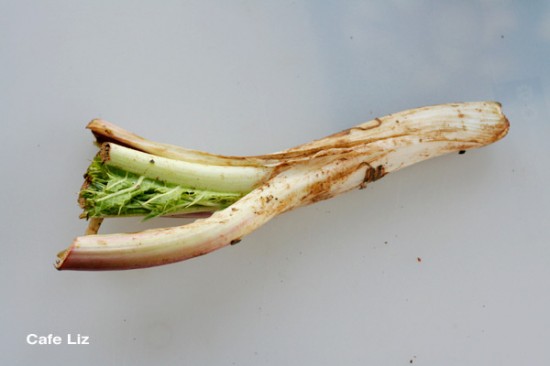
All these plants are on the protection list due to overpicking. Tumbleweed was added to the list only in 2005, which means that many people don’t know it’s even protected; I’ve even seen articles in mainstream newspapers about picking it. Since tumbleweed and cyclamen are less popular than zaatar, there isn’t too much cultivation for culinary uses, if there’s any at all.
Clearly there are two sides here — on one hand, these foods have been harvested from the wild for generations; on the other, if people keep eating them at this rate, they won’t be around for our children. (Hence, the government encourages culturing.)
Technically, if you buy a protected plant at a market stall, you’re not breaking the law, and neither is the merchant who sold it to you. I spoke to Margareta Walczak, a plant ecologist from the Israel Nature and Parks Authority, who explained that it’s the foragers who are the violators. However, foragers — or growers — selling their wares to stores don’t need to provide any certificates of origin, so there’s no way to confirm where things came from.
Illegal harvesting is still a very prevalent phenomenon, according to Dr. Walczak. Basically, ask before you buy, since it doesn’t feel so nice to encourage an industry that damages protected species.
What’s in your yard
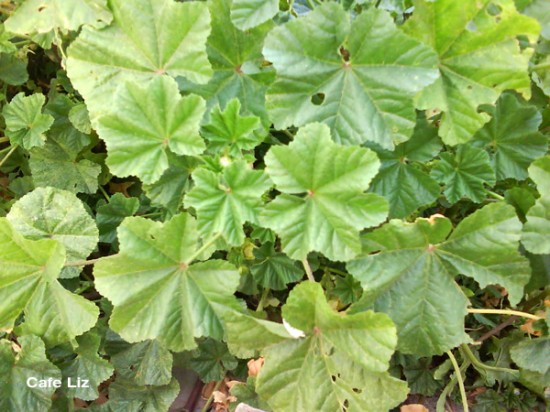
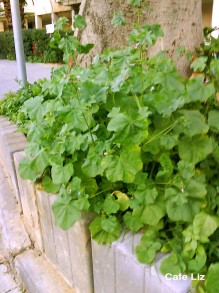 There’s nothing wrong with picking other plants, however, so long as they’re not growing in a nature reserve. And your yard, or the side of a road or a parking lot, is probably not a nature reserve.
There’s nothing wrong with picking other plants, however, so long as they’re not growing in a nature reserve. And your yard, or the side of a road or a parking lot, is probably not a nature reserve.
Not only are these plants readily available, some are even considered “human followers” — ruderal plants, Dr. Walczak explained. This means they do best in places where the ground has been disturbed. They seed massively and grow quickly.
One of the country’s most familiar ruderals (a.k.a. weeds) is mallow, known as halamit (חלמית מצויה) in Hebrew and also as hubezah (חובייזה), its Arabic name (in the photo, mallow growing in Heichal Hatarbut). So if you see a mallow patch, for instance, you can bet that some person cleared the ground there not too long ago.
Mallow is easy to recognize by its lily-pad shaped leaves and its light, mauve-colored flowers — mauve is the word for mallow in French. And the Arabic name, hubezah, comes from the word bread — because its seed pods are starchy and bread-like. The leaves tend to collect bug eggs later in the season, so look before you pick.
In my opinion, the leaves have somewhat of a legume-like flavor. They’re traditionally prepared chopped and stir-fried, but can be used anywhere you’d use a leafy green.
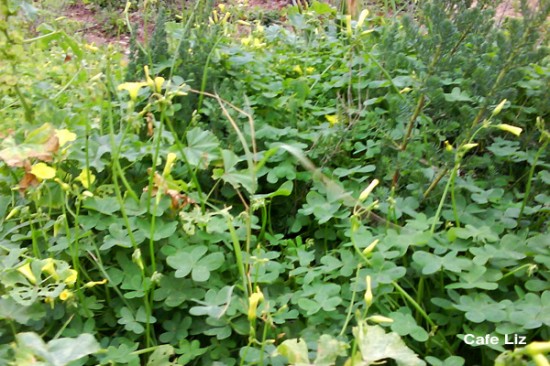
Then there’s sorrel (hamtzitz, or חמציץ), a clover-like plant with delicate yellow flowers on slender stalks (in the photo above). The wild sorrel doesn’t resemble the spinach-like French sorrel sold in markets. This one is actually an invasive species from South Africa, but it’s become a part of childhood here — kids like to pick the stalks and suck out the sour juice. So if you’re having trouble identifying this one, you could ask a child (or a former child). Consider using this tangy, sour green in soups and salads.
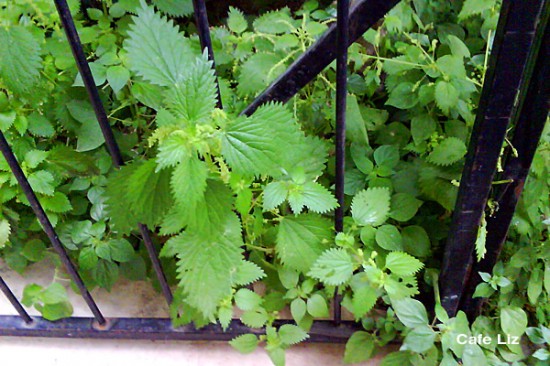
Nettle (sirpad, or סרפד), in the photo above, is infamous for its sting. In fact, that’s a factor that will help you identify it — the leaves have light, little bristles, and you can touch them cautiously without anything happening, but brush against the plant accidentally or try to break off a stem and bam! It’ll nab you. However, the plant loses its sting once cooked. It can go anywhere you’d put another leafy green, and also makes a nice tea, fellow blogger Irene says.
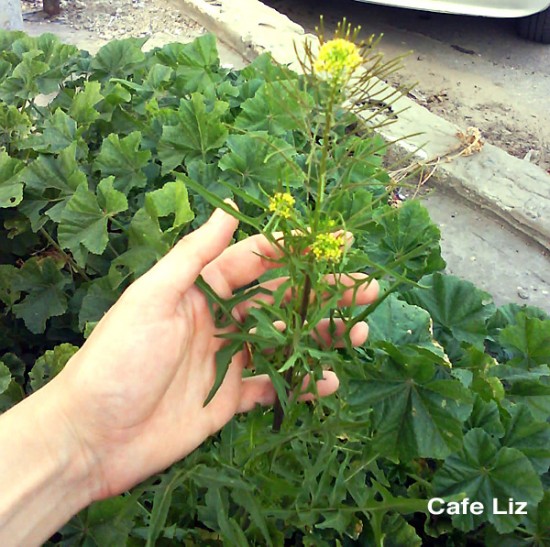
Mustard has little yellow flowers, and beneath them distinctive, slender seed pods. The leaves look somewhat like arugula, and in fact, I think I’ve found some mustard blossoms in my salad mix. I found this particular plant in a parking lot near Neve Tzedek, growing amid a massive patch of mallow.
Regarding the aversion to picking plants in urban areas due to pollution concerns, Dr. Walczak made the interesting point that many plants foraged and sold also come from the sides of roads — which aren’t exactly any cleaner. But you probably do want to make sure you’re not picking plants from some animal’s (or drunk’s) outhouse.
What’s in your market

In theory, they could be in your yard, too, since they are indigenous, but these plants are a bit more difficult to identify, and I’m also not entirely sure that you’ll find them in urban environments. At least, I haven’t managed to identify them yet. You might as well leave the plucking to the experts and enjoy the fruits (vegetables?) of their labors. A big bunch of greens won’t set you back more than 3 shekels. (In the photo: A greengrocer in Nazareth, with all sorts of wild greens out front.)

First on the list are chicory (olesh / עולש) and wild beet (selek / סלק מצוי). Chicory (in the photo above), one of the bitter herbs from the Passover seder, has long, serrated leaves, and is slightly bitter. It needs to be boiled for a minute or two to remove the worst of the bitterness, but then it becomes quite pleasant.
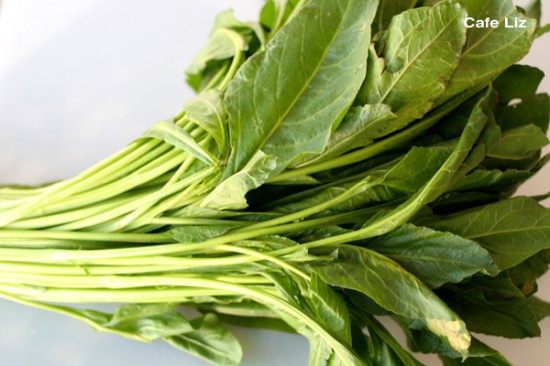
Wild beet (in the photo above) looks a lot like chicory, but has long, rounded leaves. They’re green, unlike the cultivated beet in your salad mix. They can be eaten raw or cooked, and have a somewhat earthy taste.
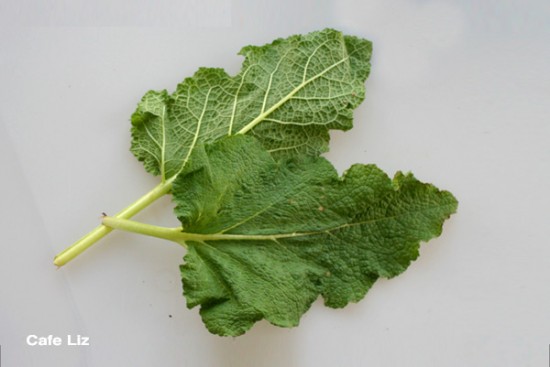
A slightly stranger beast is the leathery, oval leaf known as saineh in Arabic (in the photo above). It’s referred to in Hebrew as lashon hapar (לשון הפר), a plant in the borage family, but it actually seems to be a kind of sage. Blogger Miriam told me that it’s either Jerusalem sage ( marvat yerushalayim, מרוות ירושלי×) or clary sage (marva merushettet, מרווה מרושתת). The photos indeed look like what I bought. At least there’s consensus about the Arabic name.
The leaves are prepared stuffed, like grape leaves, and while I don’t think they have a very distinctive flavor, they have a lovely, bumpy texture.
You’ll also find mallow and mustard in the market. I found a guy selling mustard stalks in Haifa, and he told me they can be pickled.
And now for the recipes
COOKED WILD GREENS
This is a traditional, simple preparation for wild greens — lightly stir-fried or steamed, with minimal seasoning, so that the focus is on the natural flavor.
If you’re working with chicory, chop the leaves into long chunks, boil them for a minute or two, and then dress with olive oil, lemon and salt, or stir-fry and dress with lemon and salt.
If it’s beet, you can skip the boiling, and just steam or briefly stir-fry the leaves. Add some olive oil, and lemon/salt if you want.
If it’s mallow, the leaves and stems are customarily chopped into little bits before being stir-fried, possibly with onion. But you could also steam them.
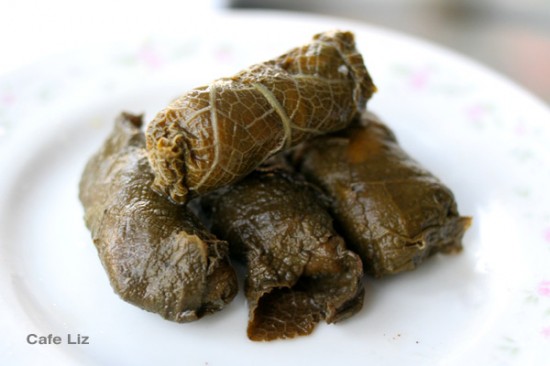
STUFFED JERUSALEM SAGE LEAVES
This is a slightly more serious recipe. The filling here is very simple, so feel free to experiment. The fun is in the rough texture of the cooked leaves.
1 bunch saineh (Jerusalem sage) leaves (35-40)
For the filling:
1 cup rice
2 tablespoons olive oil
2 teaspoons salt
1.5 teaspoons sumac
1/2 teaspoon black pepper
1/4 teaspoon cinnamon
1/4 teaspoon nutmeg
1/4 teaspoon cardamom
1/8 teaspoon cloves
a bit of chopped parsley
juice of one small lemon
For the cooking water: Another small lemon
Mix all the ingredients for the filling. Meanwhile, boil the leaves briefly to soften them.
Lay out a leaf, and put a small spoonful of filling near the stem end (the leaf can be veins up or down — your choice). Fold the leaf around the filling by folding over the stem end, then folding in the sides, and then rolling the filling up inside the rest of the leaf. (My four-stage photo tutorial on stuffing leaves.)
Arrange filled leaves inside a thick pot, so that they’re packed pretty tightly and can’t unroll. Put a heat-safe plate on top to keep them in place. Fill the pot with water so that the plate (and leaves) is submerged, and squeeze the juice from the second lemon into the pot. You can add the squeezed lemon itself, too.
Cover the pot, and cook on a low flame for about 45 minutes, until the leaves can be pierced easily with a knife or fork.
More information
There’s plenty more to read about Israel’s edible plants, in Hebrew and in English.
- Miriam covers a comprehensive list of plants that can be foraged
- Sarah points out wild greens at the market
- Sarah forages for mallow and nettle
- Irene goes foraging within the city
- Haaretz goes foraging in the Galilee
- Ynet finds goodies in the markets of the north (in Hebrew; note that tumbleweed is now protected)
- Yne lists other edible plants (in Hebrew, but with big photos)
- Wildflowers.co.il’s comprehensive collection of recipes involving wild plants (in Hebrew)
Regarding preservation efforts:
- The Society for the Protection of Nature in Israel’s list of protected plants (in Hebrew, but with scientific names in Latin script)
- SPNI on the dangers facing tumbleweed (in Hebrew)
- SPNI: look but don’t cut (in Hebrew)
Anything I left off the list that deserves to be added? Leave me a comment.

